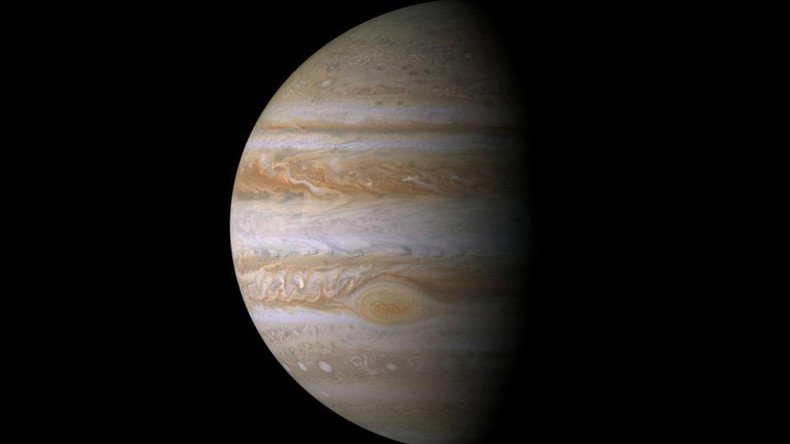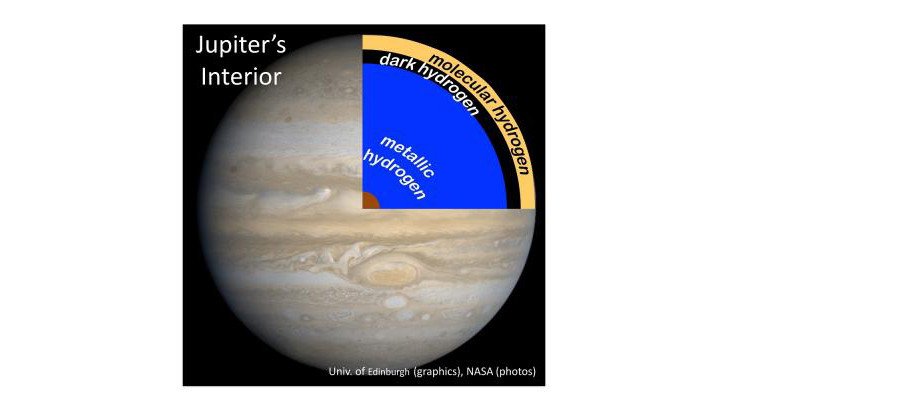‘Dark hydrogen’: Scientists recreate 3rd form of element likely found on Jupiter

By successfully forcing hydrogen into a state between metal and gas, scientists have developed ‘dark hydrogen’, a third form of the gas which they believe occurs naturally on Jupiter.
This ‘dark hydrogen’ lies somewhere between molecular hydrogen, which is what he have here on Earth, and metallic hydrogen, which can be found at the core of giant gas planets like Jupiter, Saturn, Uranus and Neptune.
The scientists’ discovery suggests that this intermediary ‘dark hydrogen’ form could exist on Jupiter and it means that researchers can study how gas giants expel heat and generate their magnetic fields more effectively.
READ MORE: Moon shadow: Whirling gas clouds of Jupiter set for close-up with Earth (PHOTOS)
The team from the Carnegie Institute of Science in Washington, DC, recreated dark hydrogen in their lab my mimicking the conditions found on planets like Jupiter - where its hydrogen gas surface and liquid metal core are separated by a layer of dark hydrogen.

By probing the physics of hydrogen under a range of pressures from 10,000 to 1.5 million times normal atmospheric pressure and up to 10,000 degrees Fahrenheit (5,537C), the team was able to discover “this unexpected intermediate phase,” according to the Carnegie Science report.
READ MORE: Monstrous gas cloud to smash into Milky Way Galaxy with ‘spectacular burst’
“This dark hydrogen layer was unexpected and inconsistent with what modeling research had led us to believe about the change from hydrogen gas to metallic hydrogen inside of celestial objects,” said Carnegie’s Alexander Goncharov who, along with the University of Edinburgh’s Stewart McWilliams, had the findings published in Physical Review Letters.
The pair and their team, which included Carnegie’s Allen Dalton and Howard University’s Mohammad Mahmood, found their lab-made dark hydrogen to be unable to transmit visible light but capable of transmitting heat.
“This observation would explain how heat can easily escape from gas giant planets like Saturn,” explained Goncharov.
Dark hydrogen was also found to be somewhat metallic, capable - though poorly - of conducting an electric current.
Scientists hope the ‘dark hydrogen’ discovery will lead to a greater understanding of how the extreme pressure and temperature inside the gas giants manages to squeeze molecular hydrogen until it becomes a liquid metal capable of conducting electricity.












